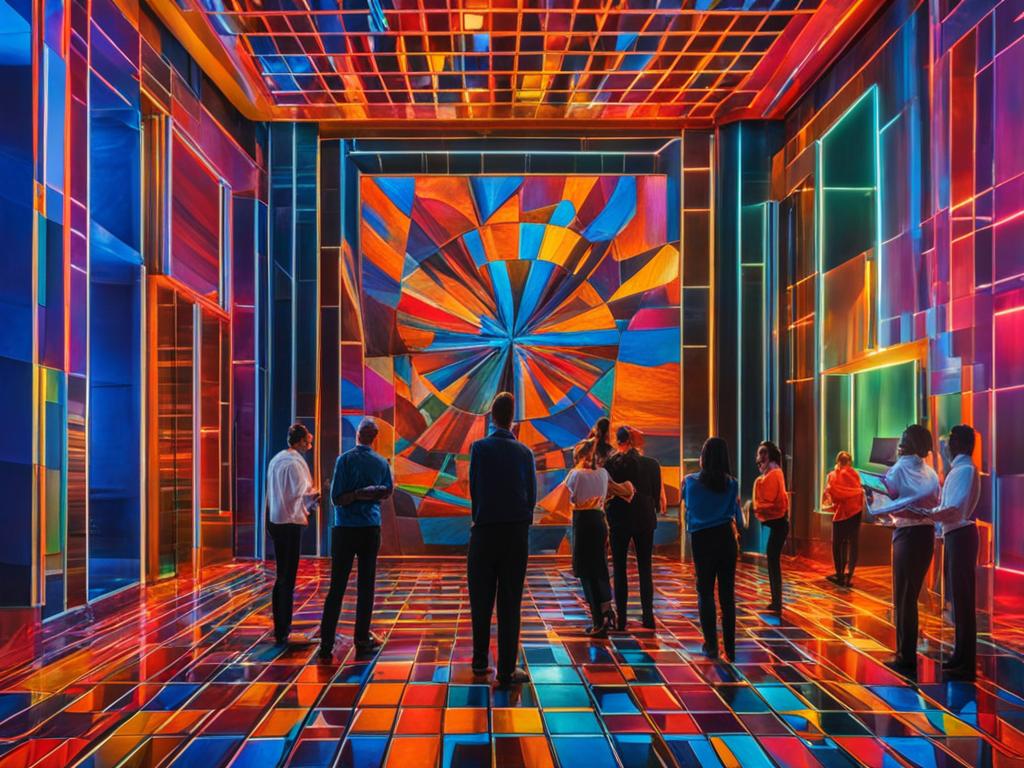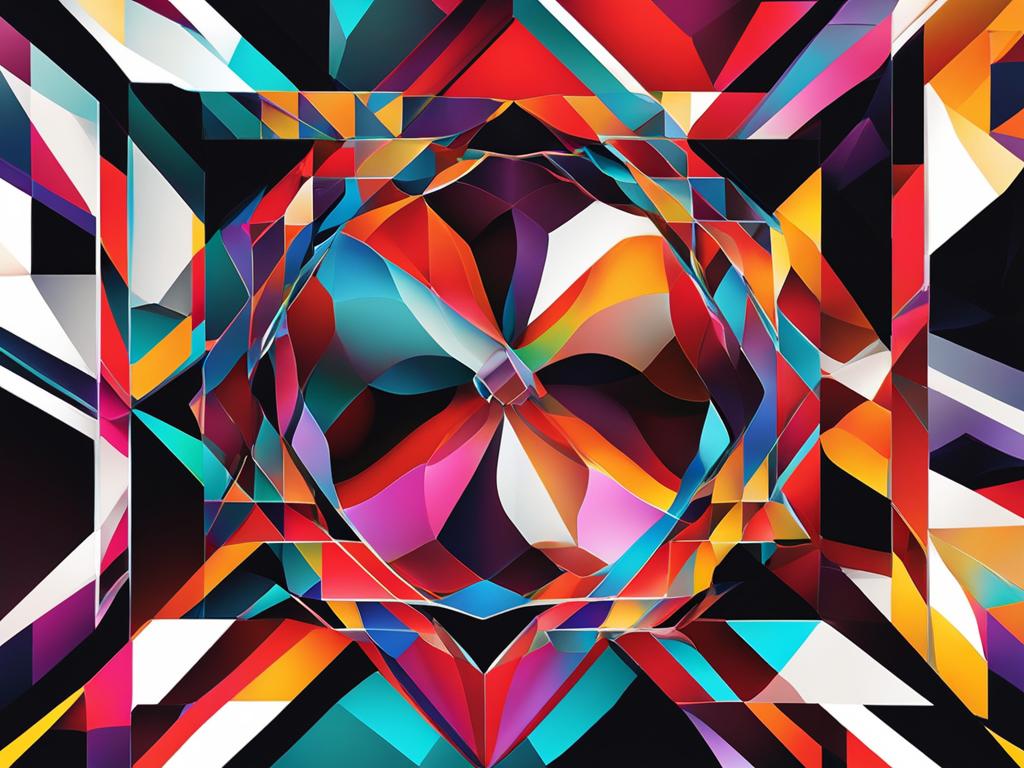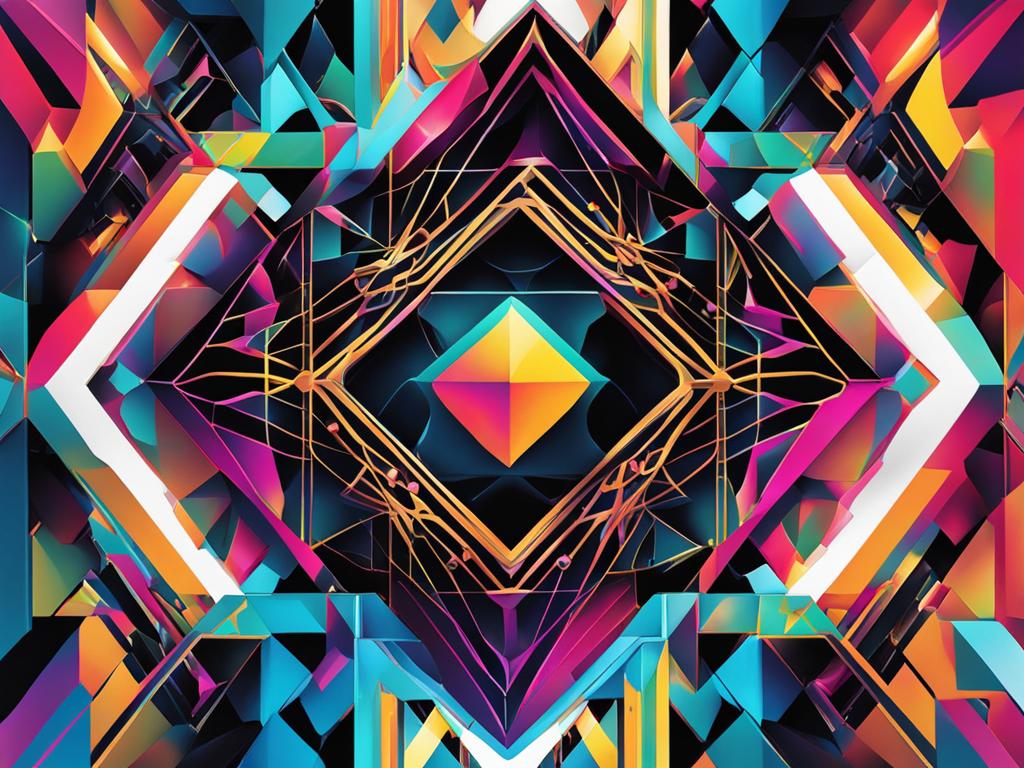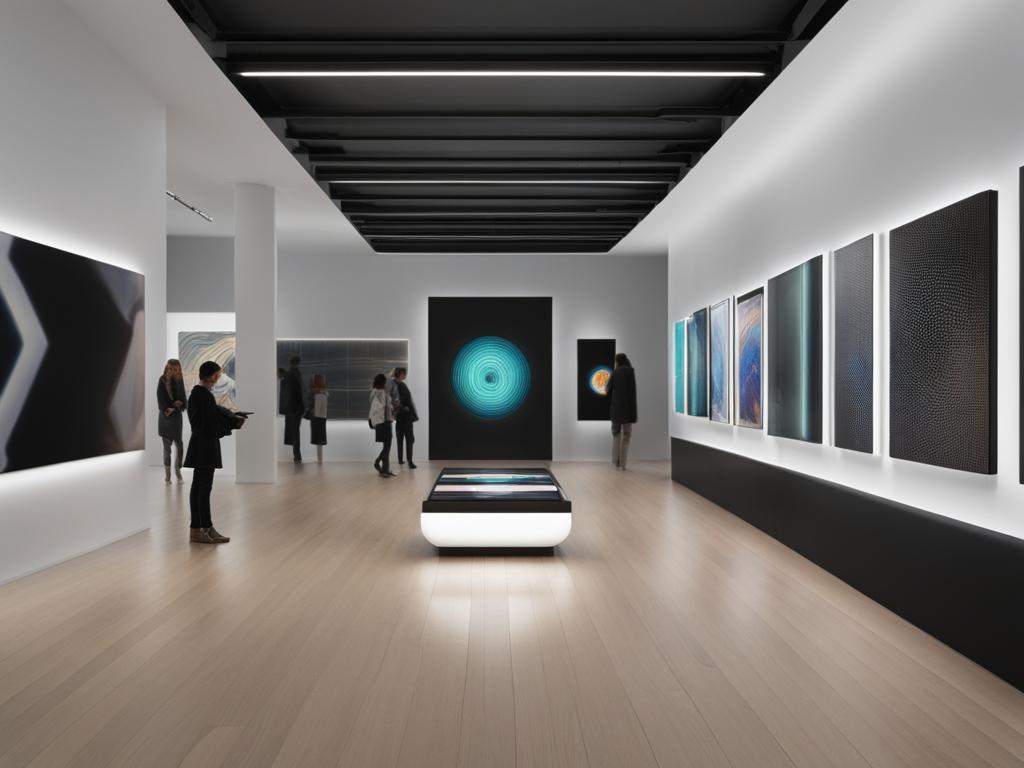Technology continues to revolutionize every aspect of our lives, and art is no exception. In recent years, the art world has witnessed an exciting new development that merges blockchain technology with photography – the birth of blockchain art photography.
Blockchain art photography allows artists to create, buy, and sell their work securely, transparently, and efficiently. It involves the integration of blockchain with Non-Fungible Tokens (NFTs), which enables digital artworks to be monetized and traded like physical art.
In this article, I will explore the growing significance of blockchain art photography and its transformative power in the art world. From the integration of blockchain with NFTs to the benefits it brings to artists and collectors, we will dive deep into the impact of this evolving medium. So join me on this journey as we uncover the wonders of blockchain art photography.
The Integration of Blockchain and NFTs
NFTs have emerged as a revolutionary solution for the challenges of digital art ownership. These blockchain-based tokens are unique, indivisible, and tamper-proof, allowing artists to tokenize their digital creations and verify their originality and provenance. By integrating blockchain with NFTs, the art world has found a way to address the longstanding issue of digital art’s authenticity and ownership rights.
Tokenizing art photography creates a digital certificate of authenticity that is unique, verified, and impossible to replicate.
Underpinning the integration of blockchain with NFTs is the decentralized nature of the blockchain. Transactions are verified and recorded by a network of nodes, ensuring that the ownership of NFTs is transparent, immutable, and secure. This enables creators and collectors to establish trust without having to rely on intermediaries like galleries, auction houses, or brokers.
Image showing the integration of blockchain technology with art photography
Furthermore, by enabling fractional ownership of NFTs, blockchain technology has paved the way for more people to invest in art assets. Collectors can now purchase a fractional share of an artwork, thereby democratizing the art world and making it more accessible and inclusive.
| Advantages of NFTs and Blockchain in Art Photography: | Disadvantages of NFTs and Blockchain in Art Photography: |
|---|---|
| Authentication of digital art ownership | Potential high transaction costs for minting NFTs |
| Transparency and immutability of transactions | Risks of hacking or theft |
| Protection against fraud and forgery | Environmental concerns around energy consumption |
| Decentralization of ownership and marketplaces | Challenges with adoption and education |
Blockchain technology and NFTs offer several advantages in art photography, such as authentication, transparency, and protection against fraud, but also have some disadvantages, including potential high transaction costs and environmental concerns.
This integration offers an innovative way for artists to monetize their digital creations and collectors to invest in a new asset class, forever changing the face of the art world. Moreover, by offering protection against fraud and facilitating secure transactions, blockchain technology and NFTs may well become the future of art marketplaces.
Revolutionizing Art with Blockchain
Blockchain technology is rapidly transforming the art industry, particularly the field of photography. The emergence of blockchain-powered art photography offers several advantages over traditional photography in terms of provenance, transparency, and security. Here are just a few of the ways in which blockchain is revolutionizing the field:
| Advantages of Blockchain-Powered Art Photography |
|---|
| Enhanced Provenance: Artwork authenticity can be verified easily through blockchain technology, providing an immutable and incorruptible record of ownership and origin throughout its lifecycle. |
| Increased Transparency: With blockchain, documentation and transaction records are transparent, allowing independent validation of the artwork’s history and the quality of the print or piece. |
| Protection against Fraud and Forgery: Blockchain’s underlying cryptographic principles make it nearly impossible to manipulate or counterfeit artwork records, ensuring that buyers and sellers know that they are buying and selling verified originals. |
Blockchain technology is particularly advantageous for fine art photography, as it helps to assure buyers of the uniqueness, originality, and quality of each piece. The use of blockchain also provides greater protection for owners and artists alike, allowing them to track every move of their artworks and ensuring their protection from unauthorized reproduction or distribution.
“Blockchain technology is a game-changer for photography. It’s helping to create new markets and opportunities, bringing necessary transparency and authenticity to an industry that has long struggled with these issues.” – Peter Hay Halpert, fine art photographer and blockchain enthusiast
The Impact on Copyright and Provenance
Blockchain technology has the potential to resolve longstanding issues surrounding copyright and provenance in the art world. As an immutable and decentralized system, the blockchain can be used to prove ownership, protect creative rights, and trace the history of an artwork.
By tokenizing art photography on the blockchain, artists can authenticate their digital creations and secure their intellectual property rights. Each transaction on the blockchain is permanent and transparent, making it difficult for forgeries and unauthorized reproductions to spread.
The blockchain’s impact on copyright and provenance can be seen in the emergence of new marketplaces for buying and selling blockchain-based art. These marketplaces, such as SuperRare and Nifty Gateway, ensure that creators are compensated for their work and that collectors have a verified and authenticated piece of art.
“The blockchain not only allows creators to receive fair compensation, but it also ensures that collectors have a legitimate piece of art with a clear and transparent history.”
Overall, the blockchain’s potential to revolutionize copyright and provenance in the art world is significant. As more artists and collectors embrace this technology, we can expect to see a greater emphasis on authenticity, transparency, and creative rights.
The Evolving Market Dynamics
The blockchain art market has witnessed a surge in digital art on the blockchain, driving significant economic growth and transformation.
Today, modern art enthusiasts no longer need to own paintings, sculptures, or other physical artifacts to indulge their love for art. Instead, digital art on the blockchain has emerged as a new genre rapidly gaining popularity among buyers and sellers worldwide. The new format features limited-edition digital images, photographs, and other media that are tokenized on the blockchain, making them verifiably unique and scarce.
The market for blockchain art is expanding at a staggering pace, with new galleries and auction houses dedicated solely to the trading of these digital assets. The recent $69 million sale of digital artist Beeple’s NFT has brought mainstream attention to blockchain-powered art photography. During the Christie’s auction of his “Everydays: The First 5000 Days” artwork, Beeple became the third most expensive living artist, ranking behind only Jeff Koons and David Hockney.
According to a recent study by art market data firm Art Tech Media Group, the blockchain art market’s value was estimated to reach $6 billion by 2025, with an estimated growth rate of over 20% per annum. This rapid expansion reflects the art world’s increasing acceptance of blockchain technology and the potential impact it has on the $50 billion traditional art market.
Benefits for Artists and Collectors
The rise of blockchain art photography brings numerous benefits to artists and collectors. Artists can exercise greater control over their creations, establish a direct connection with buyers, and receive fair royalties. Additionally, they can explore new revenue streams, leading to increased earnings and a more sustainable career. Collectors, on the other hand, can enjoy increased transparency, secure storage, and verification of the authenticity and provenance of artworks.
One of the key advantages of blockchain art photography for artists is the ability to gain greater control over their creations. Through blockchain technology, artists can certify their authorship, verify the ownership of their work, and control its distribution and use. This enables them to protect their intellectual property and ensure that they receive fair compensation for their creations. They can also establish direct connections with buyers, eliminating the need for intermediaries or middlemen.
Moreover, blockchain art photography can create new revenue streams for artists. By tokenizing their work and minting Non-Fungible Tokens (NFTs), artists can generate income from the sale, transfer, and licensing of their digital creations. The ability to set royalty rates and receive a percentage of the resale value allows artists to benefit from the increase in value of their work over time. This creates a more sustainable career path for artists and empowers them to monetize their creations more efficiently.

Collectors, on the other hand, can enjoy increased transparency and security in their art acquisitions. Through blockchain art photography, they can securely verify the ownership and authenticity of their artworks. This eliminates the potential for counterfeit works or disputed ownership rights. Moreover, blockchain technology enables collectors to invest in a growing asset class with significant potential for appreciation in value. They can securely store and transfer ownership rights, reducing the need for intermediaries and associated transaction costs.
“Blockchain allows artists to get paid for every second of use of their art, unlike previous situations where the artist would only get paid for the original transaction of their work.” – German artist Josie Bellini
Challenges and Limitations
As with any emerging technology, blockchain art photography is not without its challenges and limitations.
One major concern is the environmental impact of blockchain networks. Due to their energy-intensive mining process, the carbon footprint of blockchain transactions can be significant. To address this issue, some companies are exploring alternative consensus mechanisms that are more energy-efficient.
Another potential challenge is the possibility of stolen or counterfeit digital art. While blockchain offers enhanced security and transparency for ownership and provenance, it is not foolproof. Hackers can potentially breach blockchain systems and manipulate records. Additionally, there may be cases where artists unintentionally or intentionally misrepresent the authenticity or ownership of their work.
Finally, the adoption and education of blockchain technology within the art community is still in its early stages. Many artists and collectors may not be familiar with the nuances of blockchain and its potential applications for the art world. This can create a barrier to entry and limit the reach of blockchain art photography.
Despite these challenges, the growth and potential of blockchain art photography cannot be ignored. By continuing to address these limitations and educate the art community, blockchain technology has the potential to transform the art industry for the better.
Emerging Trends and Innovations
As blockchain art photography continues to gain traction, new trends and innovations are emerging to enhance the viewer experience and transform the art market. Here are some of the most notable developments:
| Emerging Trend/Innovation | Description |
|---|---|
| AR and VR Integration | The incorporation of augmented reality (AR) and virtual reality (VR) technologies into blockchain art photography enables viewers to experience artworks in entirely new ways. VR technology, for instance, allows users to immerse themselves in a 3D digital art installation, while AR technology can overlay digital art on physical spaces, creating new forms of interactive art. |
| Fractional Ownership | The rise of fractional ownership through blockchain smart contracts is making it easier for art enthusiasts to invest in emerging artists and own a share of high-value artworks. This development is democratizing the art world, enabling more people to participate in the art market and support emerging talent. |
| Integration with Other Industries | The potential integration of blockchain with other creative industries, such as music or fashion, is opening up new possibilities for cross-disciplinary collaboration and innovation. For instance, a musician or fashion designer could create an NFT that includes an original piece of artwork, generating new revenue streams and partnerships. |
These emerging trends and innovations are evidence of the dynamic and transformative potential of blockchain art photography. As new technologies and marketplaces emerge, the art world is becoming more accessible, transparent, and interconnected than ever before.
The Future of Blockchain Art Photography
As blockchain art photography gains traction, there are several potential developments that could shape its future trajectory. Firstly, decentralized autonomous organizations (DAOs) could emerge as key players in governing digital art communities, facilitating collaboration, communication, and decision-making among artists and collectors. This decentralized and democratic approach to art governance could disrupt traditional power structures and promote greater inclusivity and innovation.
Another potential trend is the proliferation of blockchain-based art authentication systems, which could revolutionize the way we verify the provenance, ownership, and authenticity of artworks. By using blockchain’s tamper-proof and transparent ledger system, artists and collectors could ensure that their works are protected against fraud, forgery, and theft. Furthermore, this technology could enable a more flexible and liquid art market, as artworks could be easily exchanged and verified across different platforms and marketplaces.
Finally, blockchain art photography could lead to the democratization of the art world, providing a platform for emerging and underrepresented artists to showcase their work and gain recognition in a global market. By enabling direct engagement between artists and collectors, blockchain technology could bypass intermediaries and gatekeepers, enabling a more equitable and accessible art ecosystem.
Case Studies: Success Stories in Blockchain Art Photography
Blockchain art photography has already showcased its ability to revolutionize the art world, with several successful case studies demonstrating the transformative potential of this innovative medium. Here are some examples of photographers and artists who have achieved recognition, increased sales, or groundbreaking collaborations through their use of the blockchain:
| Artist/Photographer | Success Story |
|---|---|
| Kevin Abosch | Abosch’s work titled “Forever Rose” set records by selling for over $1 million on the Ethereum blockchain. Abosch is known for his exploration of blockchain’s potential to create new ways of valuing art and rewarding artists. |
| Alejandro Cartagena | Alejandro Cartagena’s “Before the War” photography collection was sold exclusively on the blockchain, representing a new way of selling and owning art. The blockchain-powered market provided unprecedented visibility and transparency, enabling Cartagena to gain a wider audience for his work. |
| Trevor Jones | Trevor Jones is a pioneer in the use of blockchain technology for creating hybrid physical and digital art. His artwork “Picasso’s Bull” sold on SuperRare for $55,555, reflecting the growing demand for blockchain-powered art. |
| Greta Thunberg | Greta Thunberg, the climate activist, auctioned off an artwork of her iconic “School Strike for Climate” painting on the Ethereum blockchain. The auction raised $115,000 for environmental charities, showcasing blockchain’s potential for social impact. |
| Claudia Hart | Claudia Hart is a pioneering new media and digital artist who has embraced blockchain technology to create groundbreaking artworks. Her collaboration with blockchain-powered art marketplace KnownOrigin resulted in the sale of her “The Soul of the Lonely Plant” piece for 97 ETH (worth over $200,000). |
These success stories demonstrate the transformative potential of blockchain technology in the world of art photography. By providing artists with increased control, security, and transparency, and giving collectors new ways to invest in and own unique works of art, blockchain art photography is poised to reshape the art world for years to come.
Conclusion
In conclusion, blockchain art photography is an emerging field that is transforming the way art is created, bought, and sold. The integration of blockchain technology with NFTs is creating new opportunities for artists and collectors alike. By revolutionizing the art industry with a decentralized and transparent platform, blockchain technology addresses the challenges of copyright and provenance while creating new marketplaces for buying and selling digital art.
While there are challenges and limitations associated with blockchain art photography, such as concerns around the environmental impact and the potential for stolen or counterfeit digital art, emerging trends and innovations are offering solutions. From the use of augmented reality and virtual reality technologies to the integration of blockchain with other creative industries, the future of blockchain art photography is bright.
As a professional copywriting journalist, I encourage readers to explore and engage with this evolving medium that is reshaping the art world. By showcasing successful case studies of blockchain art photography, such as artists or photographers who have embraced blockchain technology and achieved recognition or increased sales through their innovative use of the blockchain, we can see the transformative potential of this exciting new field.





